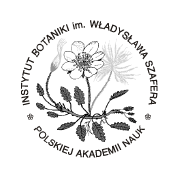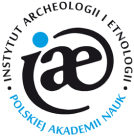- Search in all Repository
- Literature and maps
- Archeology
- Mills database
- Natural sciences
Advanced search
Advanced search
Advanced search
Advanced search
Advanced search

Object
Title: Stan i prawidłowości wykształcenia dróg leśnych w Tatrzańskim Parku Narodowym i jego otoczeniu = Condition and formation regularities characterising forest roads in Poland’s Tatra National Park and its surroundings
Creator:
Wojtaszowicz, Agnieszka
:
Autor
![]()
![]() ;
Fidelus-Orzechowska, Joanna
:
Autor
;
Fidelus-Orzechowska, Joanna
:
Autor
![]()
![]()
Date issued/created:
Resource type:
Subtitle:
Przegląd Geograficzny T. 97 z. 1 (2025)
Publisher:
Place of publishing:
Description:
Abstract:
The main aim of this article was to present the regularity of morphogenetic processes within forest roads on the morphological position and geological bedrock. Geomorphological mapping was carried out in the second half of 2022 in the area of the Tatra National Park and in the area bordering the TNP. Forest roads in use during the study season were included, as well as those where skidding work had ceased. The study shows that the process having the greatest influence on the formation and development of road cuts is sheet washing. The greatest increase in the development of erosion forms within the surveyed forest roads and skidding trails was observed in sections laid on slopes with a gradient of more than 10º, running in line with the slope. An important aspect is the design and construction of the road taking into account the natural conditions of the terrain and the appropriate protection of unused roads to reduce the erosive activity of water.
References:
Affek, A. (2019). Wpływ gospodarki leśnej na terenach górskich na wybrane elementy środowiska - aktualny stan wiedzy. Impact of mountain forest management on selected elements of the environment - the current state of knowledge. Przegląd Geograficzny, 91(1), 63‑81. https://doi.org/10.7163/PrzG.2019.1.3
![]()
Akbarimehr, M., & Naghdi, R. (2012). Reducing erosion from forest roads and skid trails by management practices. Journal of Forest Science, 58, 165‑169. https://doi.org/10.17221/136/2010-JFS
![]()
Byblyuk, N., Styranivsky, O., Korzhov, V., & Kudra, V. (2010). Timber harvesting in the Ukrainian Carpathians: ecological problems and methods to solve them. Journal of Forest Science, 56, 333‑340. https://doi.org/10.17221/111/2009-JFS
![]()
Bajrić, M., Sokolović, D., Musić, J., & Halilović, V. (2013). Assessment of intensity of erosion and natural coverage of tractor roads in post-exploitation period. Radovi šumarskog fakulteta Univerziteta u Sarajevu, 43(1), 27‑38. https://doi.org/10.54652/rsf.2013.v43.i1.115
![]()
Barančok, P., & Varsavova, M. (1996). The influence of tourism on the natural environment of the Belianske Tatry Mountains investigated on an educational hiking path situated in the locality of Monkova Dolina - Kopske Sedlo and its near surroundings, Ekologia, 15(4), 469‑473.
Bryndal, T., & Kroczak, R. (2019). Reconstruction and characterization of the surface drainage system functioning during extreme rainfall: the analysis with use of the ALS-LIDAR data-the case study in two small flysch catchments (Outer Carpathian, Poland). Environmental Earth Sciences, 78(6), 215. https://doi.org/10.1007/s12665-019-8211-6
![]()
Bucała-Hrabia, A. (2018). Land use changes and their catchment-scale environmental impact in the Polish Western Carpathians during transition from centrally-planned to free-market economics. Geographia Polonica, 91(2), 171‑196. https://doi.org/10.7163/GPol.0116
![]()
Cristan, R., Aust, W.M., Bolding, M.C., Barrett, S.M., Munsell, J.F., & Schilling, E. (2016). Effectiveness of forestry best management practices in the United States: Literature review. Forest Ecology and Management, 360, 133‑151. https://doi.org/10.1016/j.foreco.2015.10.025
![]()
Czochański, J.T., & Szydarowski, W. (2000). Diagnoza stanu i zróżnicowanie przestrzenno-czasowe użytkowania szlaków turystycznych w TPN.W: D. Borowiak, J.T. Czochański (red.), Z badań geograficznych w Tatrach Polskich (s. 207‑228). Gdańsk: Wydawnictwo UG.
Dąbek, P., Żmuda, R., Ćmielewski, B., & Szczepański, J. (2014). Analysis of water erosion processes using terrestrial laser scanning. Acta Geodynamica et Geomaterialia, 11(1), 173. https://doi.org/10.13168/AGG.2013.0054
![]()
Edwards, P.J., Wood, F., & Quinlivan, R.L. (2016). Effectiveness of best management practices that have application to forest roads: a literature synthesis. Gen. Tech. Rep. NRS-163. Newtown Square, PA: US Department of Agriculture, Forest Service, Northern Research Station.
![]()
Elliot, W.J., Lewis, SA, & Cannard, C.L. (2023) Measuring and modeling impacts of gravel road design on sediment generation in the southeastern U.S. American Society of Agricultural and Biological Engineers. Journal of the ASABE, 66(5), 1229‑1254. https://doi.org/10.13031/ja.15539
![]()
Fidelus-Orzechowska, J., Gorczyca, E., Bukowski, M., & Krzemień, K. (2021). Degradation of a protected mountain area by tourist traffic: case study of the Tatra National Park, Poland. Journal of Mountain Science, 18(10), 2503‑2519. https://doi.org/10.1007/s11629-020-6611-4
![]()
Fidelus-Orzechowska, J., Gorczyca, E., & Krzemień, K. (2017). Geomorfologiczne skutki gospodarki turystycznej w Tatrach. Kraków: Instytut Geografii i Gospodarki Przestrzennej UJ.
Fidelus‐Orzechowska, J., Puniach, E., Ćwiąkała, P., Strzyżowski, D., & Nędzka, M. (2023). Changes within the roadbed and the cutslope of an abandoned forest road. A case‐study from the Tatra Mts. (Poland). Land Degradation & Development, 34(2), 558‑569. https://doi.org/10.1002/ldr.4479
![]()
Fidelus-Orzechowska, J., Strzyżowski, D., Cebulski, J., & Wrońska-Wałach, D. (2020). A quantitative analysis of surface changes on an abandoned forest road in the Lejowa Valley (Tatra Mountains, Poland). Remote Sensing, 20(12), 3467. https://doi.org/10.3390/rs12203467
![]()
Fidelus-Orzechowska, J., Strzyżowski, D., & Żelazny, M. (2018). The geomorphic activity of forest roads and its dependencies in the Tatra Mountains. Geografiska Annaler: Series A, Physical Geography, 100(1), 59‑74. https://doi.org/10.1080/04353676.2017.1376585
![]()
Gorczyca, E. (2000). Wpływ ruchu turystycznego na przekształcanie rzeźby wysokogórskiej na przykładzie masywu Czerwonych Wierchów i Regli Zakopiańskich. W: B. Obrębska-Starkel (red.), Studia z zakresu geografii fizycznej. Zeszyty Naukowe UJ, Prace Geograficzne, 105, 369‑389.
Gorczyca, E. (2008). The geomorphological effectiveness of extreme meteorological phenomena on flysch slopes. Landform Analysis, 6, 15‑27.
Gorczyca, E., & Krzemień, K. (2002). Wpływ ruchu turystycznego na rzeźbę Tatrzańskiego Parku Narodowego. W: W. Borowiec, A. Kotarba, A. Kownacki, Z. Krzan, Z. Mirek (red.), Przemiany środowiska przyrodniczego Tatr (s. 389‑394). Kraków-Zakopane: Wydawnictwo TPN.
Gorczyca, E., & Krzemień, K. (2005). Wpływ turystyki pieszej na przekształcanie rzeźby Tatr. W: B. Domański, S. Skiba (red.), Geografia i Sacrum (s. 77‑85). Kraków: Wydawnictwo IGiGP UJ.
Gorczyca, E., & Krzemień, K. (2006). Wpływ ruchu turystycznego na przekształcenia rzeźby. W: J. Trepińska, Z. Olecki (red.), Klimatyczne aspekty środowiska geograficznego (s. 311‑323). Kraków: Wydawnictwo IGiGP.
Gorczyca, E., & Krzemień, K. (2006). Rola ruchu turystycznego w przeobrażaniu rzeźby Tatr na tle wybranych obszarów górskich. W: Z. Krzan (red.), Tatrzański Park Narodowy na tle innych górskich terenów chronionych (s. 81‑86), t. III. Zakopane: Wydawnictwo TPN.
Gorczyca, E., & Krzemień, K. (2008). Morfologiczne skutki ekstremalnego zdarzenia opadowego w Tatrach reglowych w czerwcu 2007 r. Landform Analysis, 8, 21‑24.
Gorczyca, E., & Krzemień, K. (2009). Rola antropopresji w przekształcaniu obszarów wysokogórskich na przykładzie Tatr i Monts Dore. Prace i Studia Geograficzne, 41, 89‑106.
Gorczyca, E., & Krzemień, K. (2010). Rola dróg i ścieżek turystycznych w modelowaniu rzeźby gór strefy umiarkowanej. Roczniki Bieszczadzkie, 18, 228‑242.
Gucinski, H., Furniss, M.J., Ziemer, R.R., & Brookes, M.H. (2001). Forest roads: a synthesis of scientific information. General Technical Report, 509. Portland: US Department of Agriculture, Forest Service, Pacific Northwest Research Station.
![]()
Hreško, J., Bugár, G., & Petrovič, F. (2009). Changes of vegetation and soil cover in alpine zone due to anthropogenic and geomorphological processes. Landform Analysis, 10, 39‑43.
Kasprzak, M. (2005). Tempo degradacji powierzchni dróg i ścieżek turystycznych w Karkonoszach Wschodnich. Opera Corcontica, 42(17).
Kastridis, A. (2020). Impact of forest roads on hydrological processes. Forests, 11, 1201. https://doi.org/10.3390/f11111201
![]()
Kleinschroth, F., Gourlet-Fleury, S., Sist, P., Mortier, F., & Healey, J.R. (2015). Legacy of logging roads in the Congo Basin: how persistent are the scars in forest cover? Ecosphere, 6(4), 1‑17. https://doi.org/c10.1890/ES14-00488.1
![]()
Klimaszewski, M., (1988). Rzeźba Tatr Polskich. PWN: Warszawa.
Kłapa, M. (1980). Procesy morfogenetyczne oraz ich związek z sezonowymi zmianami pogody w otoczeniu Hali Gąsienicowej w Tatrach. Dokumentacja Geograficzna, 4. Warszawa: IGiPZ PAN.
Kroczak, R. (2010). Geomorfologiczne i hydrologiczne skutki funkcjonowania dróg polnych na Pogórzu Ciężkowickim. Prace Geograficzne, 225. Warszawa: IGiPZ PAN.
Kroczak, R., & Bryndal, T. (2017). Wykorzystanie numerycznych modeli terenu do generowania systemu drenażu powierzchniowego, funkcjonującego podczas opadów nawalnych. Podstawy metodyczne na podstawie studium przypadku zlewni Zalasówki (Pogórze Ciężkowickie). Przegląd Geograficzny, 89(1), 67‑85. https://doi.org/10.7163/Prz.G.2017.1.4
![]()
Kroczak, R., & Soja, R. (2011). Przestrzenne zróżnicowanie gęstości dróg polnych na Pogórzu Ciężkowickim na tle regionów południowej Polski. Problemy Zagospodarowania Ziem Górskich, 58, 41‑52.
Krusiec, M. (1996). Wpływ ruchu turystycznego na przekształcanie rzeźby Tatr Zachodnich na przykładzie Doliny Chochołowskiej. Czasopismo Geograficzne, 67, 303‑320.
Łukasik, W., Kubiesa, P., & Staszewski, T. (2016). Erosion processes initialized by use of heavy equipment in mountain forests of the Wilczy Potok catchment, Silesian Beskids. Archives of Environmental Protection, 42(1), 80‑86. https://doi.org/10.1515/aep-2016-0010
![]()
Megahan, W.F., Wilson, M., & Monsen, S.B. (2001). Sediment production from granitic cutslopes on forest roads in Idaho, USA. Earth Surface Processes and Landforms: The Journal of the British Geomorphological Research Group, 26(2), 153‑163. https://doi.org/10.1002/1096-9837(200102)26:2<153::AID-ESP172>3.0.CO;2-0
![]()
Nyssen, J., Poesen, J., Moeyersons, J., Luyten, E., Veyret-Picot, M., Deckers, J., Haile, M., & Govers, G. (2002). Impact of road building on gully erosion risk: a case study from the northern Ethiopian highlands. Earth Surface Processes and Landforms: The Journal of the British Geomorphological Research Group, 27(12), 1267‑1283. https://doi.org/10.1002/esp.404
![]()
Ortofotomapa obszaru Doliny Huciańskiej z lat 2012, 2015, 2018, 2020. Pobrane z: https://tpn.obliview.com/(08.08.2024).
Packer, P.E. (1967). Criteria for designing and locating logging roads to control sediment. Forest Science, 13(1), 2-18. https://doi.org/10.1093/forestscience/13.1.2
![]()
Parzóch, K. (2002). Procesy erozyjne na stokach wylesionych w Karkonoszach. Zeszyty Problemowe Postępów Nauk Rolniczych, 487, 239‑247.
Passendorfer, E. (1996). Geologia. W: Z. Mirek, Z. Głowaciński, K. Klimek, H. Piękoś-Mirkowa (red.), Przyroda Tatrzańskiego Parku Narodowego, Tatry i Podtatrze, 3 (s. 69‑96). Kraków-Zakopane: Tatrzański Park Narodowy.
Piotrowska, K., Kotański, Z., Gawęda, A., Piotrowski, J., Rączkowski, W. (2017). Szczegółowa Mapa Geologiczna Polski w skali 1:50000. Arkusz: Tatry Zachodnie. Warszawa: Państwowy Instytut Geologiczny - PIB.
Plewniak, J., & Gołąb, J. (2017). Gospodarczo-techniczne uwarunkowania procesu projektowania szlaków zrywkowych w lasach górskich. Infrastruktura i Ekologia Terenów Wiejskich, 1(1), 85‑99. http://doi.org/10.14597/infraeco.2017.1.1.007
![]()
Ramos-Scharrón, C.E., & MacDonald, L.H. (2007). Measurement and prediction of natural and anthropogenic sediment sources, St. John, US Virgin Islands. Catena, 71(2), 250‑266. https://doi.org/10.1016/j.catena.2007.03.009
![]()
Rączkowska, Z., & Kozłowska, A. (2002). Odzwierciedlenie wpływów antropogenicznych w wybranych elementach środowiska przyrodniczego otoczenia Kasprowego Wierchu. W: W. Borowiec, A. Kotarba, A. Kownacki, Z. Krzan, Z. Mirek (red.), Przemiany środowiska przyrodniczego Tatr (s. 403‑406). Kraków-Zakopane: Wydawnictwo TPN.
Rączkowska, Z., & Kozłowska, A. (2010). Wpływ turystyki na rzeźbę i roślinność przy ścieżkach w otoczeniu Kasprowego Wierchu. W: Z. Krzan (red.), Przyroda Tatrzańskiego Parku Narodowego a Człowiek (s. 21‑28). Zakopane: Tatrzański Park Narodowy.
Reid, L.M., & Dunne, T. (1984). Sediment production from forest road surfaces. Water Resources Research, 20(11), 1753‑1761.
![]()
Rojan, E. (2015). Changes in unpaved forest roads of the windthrow area in the Slovak High Tatra Mts in years 2004‑14. Štúdie o Tatranskom Národnom Parku, 44(11), 97‑106.
Şakar, D., Aydin, A., & Akay, A.E. (2022). Essential issues related to construction phases of road networks in protected areas: A review. Croatian Journal of Forest Engineering: Journal for Theory and Application of Forestry Engineering, 43(1), 219‑237. https://doi.org/10.5552/crojfe.2022.1179
![]()
Sidle, R.C., Furuichi, T., & Kono, Y. (2011). Unprecedented rates of landslide and surface erosion along a newly constructed road in Yunnan, China. Natural Hazards, 57, 313‑326. https://doi.org/10.1007/s11069-010-9614-6
![]()
Sidle, R.C., Ghestem, M., & Stokes, A. (2014). Epic landslide erosion from mountain roads in Yunnan, China-challenges for sustainable development. Natural Hazards and Earth System Sciences, 14(11), 3093‑3104. https://doi.org/10.5194/nhess-14-3093-2014
![]()
Skawiński, P. (1993). Oddziaływanie człowieka na przyrodę kopuły Kasprowego Wierchu oraz Doliny Goryczkowej w Tatrach. W: W. Cichocki (red.), Ochrona Tatr w obliczu zagrożeń (s. 197‑226). Zakopane: Wyd. Muzeum Tatrzańskiego.
Skawiński, P. (1996). Gospodarka leśna przed i po utworzeniu Tatrzańskiego Parku Narodowego. Osiągnięcia, porażki, kontrowersje. W: Z. Krzan (red.), Przyroda Tatrzańskiego Parku Narodowego a Człowiek, 3 (s. 83‑85). Zakopane: Tatrzański Park Narodowy.
Sosnowski, J. (1996). Ćwiczenia z transportu drewna. Kraków: Akademia Rolnicza.
Sosnowski, J. (2002). Szlaki zrywkowe w proekologicznym gospodarstwie leśnym. Część II - Projektowanie, wykonawstwo i użytkowanie szlaków zrywkowych. Sylwan, 146(8), 73‑80.
Soulis, K.X., Dercas, N., & Papadaki, C.H. (2015). Effects of forest roads on the hydrological response of a small‐scale mountain watershed in Greece. Hydrological processes, 29(7), 1772‑1782. https://doi.org/10.1002/hyp.10301
![]()
Swift Jr, L.W. (1984). Soil losses from roadbeds and cut and fill slopes in the southern Appalachian Mountains. Southern Journal of Applied Forestry, 8(4), 209-216. https://doi.org/10.1093/sjaf/8.4.209
![]()
Ustawa o lasach. (1991). Ustawa z dnia 28 września 1991 o lasach (Dz.U. 1991 nr 101 poz. 444).
Wałdykowski, P. (2006). Wpływ dróg górskich na dynamikę procesów morfologicznych w rejonie Turbacza, Ochrona Beskidów Zachodnich, 1 (s. 67‑79). Poręba Wielka: Gorczański Park Narodowy.
Wałdykowski, P., & Krzemień, K. (2013). The role of road and footpath networks in shaping the relief of middle mountains on the example of the Gorce Mountains (Poland). Zeitschrift für Geomorphologie, 57(4), 429‑470. https://doi.org/10.1127/0372-8854/2013/0108
![]()
Wang, C., Liu, B., Yang, Q., Pang, G., Long, Y., Wang, L., Cruse, R., Dang, W., Liu, X., & Wang, E. (2022). Unpaved road erosion after heavy storms in mountain areas of northern China. International Soil and Water Conservation Research, 10(1), 29‑37. https://doi.org/10.1016/j.iswcr.2021.04.012
![]()
Wemple, B.C., Jones, J.A. (2003). Runoff production on forest roads in a steep, mountain catchment. Water Resources Research, 39(8). https://doi.org/10.1029/2002WR001744
![]()
Wemple, B.C., Browning, T., Ziegler, A.D., Celi, J., Chun, K.P., Jaramillo, F., Leite, K.N, Ramchunder, S.J, Negishi, N.J., Palomeque, X., & Sawyer, D. (2018). Ecohydrological disturbances associated with roads: Current knowledge, research needs, and management concerns with reference to the tropics. Ecohydrology, 11(3), e1881. https://doi.org/10.1002/eco.1881
![]()
Yu, J., Zhao, Q., Yu, Z., Liu, Y., & Ding, S. (2024). A Review of the Sediment Production and Transport Processes of Forest Road Erosion. Forests, 15(3), 454. https://doi.org/10.3390/f15030454
![]()
Yu, Z., Zhao, Q., Liu, Y., Yu, J., Wang, A., & Ding, S. (2024). Soil erosion associated with roads. A global review and statistical analysis. Land Degradation & Development, 35(11), 3509‑3522. https://doi.org/10.1002/ldr.5159
![]()
Zemke, J.J. (2016). Runoff and soil erosion assessment on forest roads using a small scale rainfall simulator. Hydrology, 25(3). https://doi.org/10.3390/hydrology3030025
![]()
Relation:
Volume:
Issue:
Start page:
End page:
Detailed Resource Type:
Format:
Resource Identifier:
oai:rcin.org.pl:244838 ; 0033-2143 (print) ; 2300-8466 (on-line) ; 10.7163/PrzG.2025.1.2
Source:
CBGiOS. IGiPZ PAN, sygn.: Cz.181, Cz.3136, Cz.4187 ; click here to follow the link
Language:
Language of abstract:
Rights:
Creative Commons Attribution BY 4.0 license
Terms of use:
Copyright-protected material. [CC BY 4.0] May be used within the scope specified in Creative Commons Attribution BY 4.0 license, full text available at: ; -
Digitizing institution:
Institute of Geography and Spatial Organization of the Polish Academy of Sciences
Original in:
Projects co-financed by:
Programme Innovative Economy, 2010-2014, Priority Axis 2. R&D infrastructure ; European Union. European Regional Development Fund
Access:
Object collections:
- Digital Repository of Scientific Institutes > Partners' collections > Institute of Geography and Spatial Organization PAS (IGiPZ PAN) > Publications of IGiPZ PAN and employees
- Digital Repository of Scientific Institutes > Partners' collections > Institute of Geography and Spatial Organization PAS (IGiPZ PAN) > Library > Series/Journals/Periodics
- Digital Repository of Scientific Institutes > Literature > Journals/Articles
Last modified:
Apr 14, 2025
In our library since:
Apr 14, 2025
Number of object content downloads / hits:
42
All available object's versions:
https://rcin.org.pl./publication/281493
Show description in RDF format:
Show description in RDFa format:
Show description in OAI-PMH format:
Objects Similar
Szafrańska, Ewa
Śleszyński, Przemysław
Kawecka-Endrukajtis, Barbara Tuszyńska-Rękawek, Halina Sielużycka, Jadwiga

 INSTYTUT ARCHEOLOGII I ETNOLOGII POLSKIEJ AKADEMII NAUK
INSTYTUT ARCHEOLOGII I ETNOLOGII POLSKIEJ AKADEMII NAUK
 INSTYTUT BADAŃ LITERACKICH POLSKIEJ AKADEMII NAUK
INSTYTUT BADAŃ LITERACKICH POLSKIEJ AKADEMII NAUK
 INSTYTUT BADAWCZY LEŚNICTWA
INSTYTUT BADAWCZY LEŚNICTWA
 INSTYTUT BIOLOGII DOŚWIADCZALNEJ IM. MARCELEGO NENCKIEGO POLSKIEJ AKADEMII NAUK
INSTYTUT BIOLOGII DOŚWIADCZALNEJ IM. MARCELEGO NENCKIEGO POLSKIEJ AKADEMII NAUK
 INSTYTUT BIOLOGII SSAKÓW POLSKIEJ AKADEMII NAUK
INSTYTUT BIOLOGII SSAKÓW POLSKIEJ AKADEMII NAUK
 INSTYTUT CHEMII FIZYCZNEJ PAN
INSTYTUT CHEMII FIZYCZNEJ PAN
 INSTYTUT CHEMII ORGANICZNEJ PAN
INSTYTUT CHEMII ORGANICZNEJ PAN
 INSTYTUT FILOZOFII I SOCJOLOGII PAN
INSTYTUT FILOZOFII I SOCJOLOGII PAN
 INSTYTUT GEOGRAFII I PRZESTRZENNEGO ZAGOSPODAROWANIA PAN
INSTYTUT GEOGRAFII I PRZESTRZENNEGO ZAGOSPODAROWANIA PAN
 INSTYTUT HISTORII im. TADEUSZA MANTEUFFLA POLSKIEJ AKADEMII NAUK
INSTYTUT HISTORII im. TADEUSZA MANTEUFFLA POLSKIEJ AKADEMII NAUK
 INSTYTUT JĘZYKA POLSKIEGO POLSKIEJ AKADEMII NAUK
INSTYTUT JĘZYKA POLSKIEGO POLSKIEJ AKADEMII NAUK
 INSTYTUT MATEMATYCZNY PAN
INSTYTUT MATEMATYCZNY PAN
 INSTYTUT MEDYCYNY DOŚWIADCZALNEJ I KLINICZNEJ IM.MIROSŁAWA MOSSAKOWSKIEGO POLSKIEJ AKADEMII NAUK
INSTYTUT MEDYCYNY DOŚWIADCZALNEJ I KLINICZNEJ IM.MIROSŁAWA MOSSAKOWSKIEGO POLSKIEJ AKADEMII NAUK
 INSTYTUT PODSTAWOWYCH PROBLEMÓW TECHNIKI PAN
INSTYTUT PODSTAWOWYCH PROBLEMÓW TECHNIKI PAN
 INSTYTUT SLAWISTYKI PAN
INSTYTUT SLAWISTYKI PAN
 SIEĆ BADAWCZA ŁUKASIEWICZ - INSTYTUT TECHNOLOGII MATERIAŁÓW ELEKTRONICZNYCH
SIEĆ BADAWCZA ŁUKASIEWICZ - INSTYTUT TECHNOLOGII MATERIAŁÓW ELEKTRONICZNYCH
 MUZEUM I INSTYTUT ZOOLOGII POLSKIEJ AKADEMII NAUK
MUZEUM I INSTYTUT ZOOLOGII POLSKIEJ AKADEMII NAUK
 INSTYTUT BADAŃ SYSTEMOWYCH PAN
INSTYTUT BADAŃ SYSTEMOWYCH PAN
 INSTYTUT BOTANIKI IM. WŁADYSŁAWA SZAFERA POLSKIEJ AKADEMII NAUK
INSTYTUT BOTANIKI IM. WŁADYSŁAWA SZAFERA POLSKIEJ AKADEMII NAUK




































